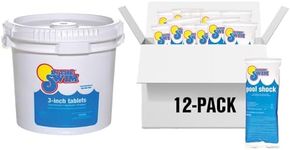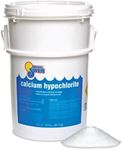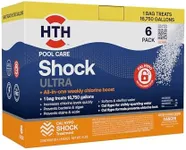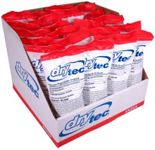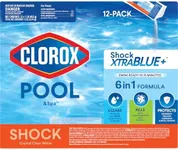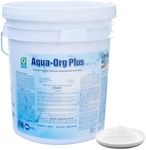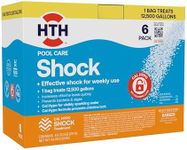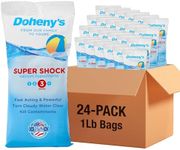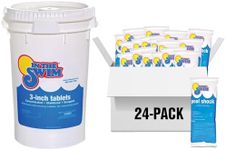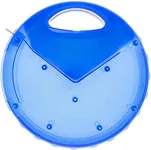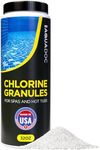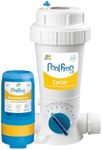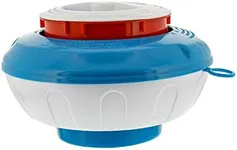Buying Guide for the Best Pool Shocks
Choosing the right pool shock is essential for maintaining a clean and healthy swimming pool. Pool shock is a chemical treatment used to kill bacteria, algae, and other contaminants that can build up in your pool water. When selecting a pool shock, it's important to consider several key specifications to ensure you get the best product for your needs. Understanding these specifications will help you make an informed decision and keep your pool water crystal clear and safe for swimming.Type of Pool ShockThere are different types of pool shocks available, including calcium hypochlorite, sodium di-chlor, potassium monopersulfate, and lithium hypochlorite. Each type has its own benefits and drawbacks. Calcium hypochlorite is a powerful and fast-acting shock, but it can raise calcium levels in your pool. Sodium di-chlor is stabilized, meaning it contains cyanuric acid to protect chlorine from sunlight, making it ideal for outdoor pools. Potassium monopersulfate is a non-chlorine shock, which is great for regular maintenance and won't affect chlorine levels. Lithium hypochlorite is fast-dissolving and doesn't add calcium, but it is more expensive. Choose the type based on your pool's specific needs and your maintenance routine.
Chlorine ContentThe chlorine content in pool shock is crucial because it determines how effectively the product will sanitize your pool. Chlorine content is usually measured in percentage. Higher chlorine content means a stronger and faster-acting shock. For example, calcium hypochlorite typically has around 65-75% chlorine, while sodium di-chlor has about 56%. If you need a quick and powerful treatment, opt for a shock with higher chlorine content. For regular maintenance, a lower chlorine content may be sufficient.
Dissolving TimeDissolving time refers to how quickly the pool shock dissolves in water. Fast-dissolving shocks are convenient because they work quickly and reduce the risk of undissolved granules settling on the pool floor, which can cause staining or damage. Calcium hypochlorite and lithium hypochlorite are known for their fast-dissolving properties. If you prefer a quick and hassle-free treatment, choose a fast-dissolving shock. However, if you don't mind waiting a bit longer, other types may be suitable as well.
Stabilized vs. UnstabilizedStabilized pool shocks contain cyanuric acid, which helps protect chlorine from being broken down by sunlight. This makes them ideal for outdoor pools that are exposed to direct sunlight. Sodium di-chlor is a common stabilized shock. Unstabilized shocks, like calcium hypochlorite, do not contain cyanuric acid and are better suited for indoor pools or for use when you need a quick chlorine boost without adding stabilizer. Consider whether your pool is indoors or outdoors and how much sunlight it gets when choosing between stabilized and unstabilized shocks.
Usage FrequencyThe frequency with which you need to shock your pool can influence your choice. Some shocks are designed for weekly maintenance, while others are intended for occasional use, such as after heavy pool usage or following a rainstorm. Non-chlorine shocks, like potassium monopersulfate, are great for regular maintenance because they won't affect chlorine levels. For occasional, more intensive treatments, a chlorine-based shock may be more appropriate. Determine how often you plan to shock your pool and choose a product that fits your maintenance schedule.
